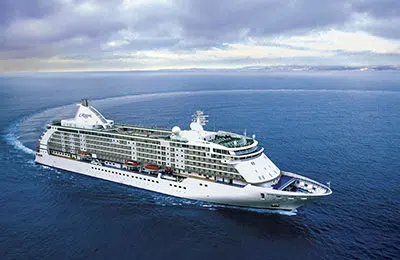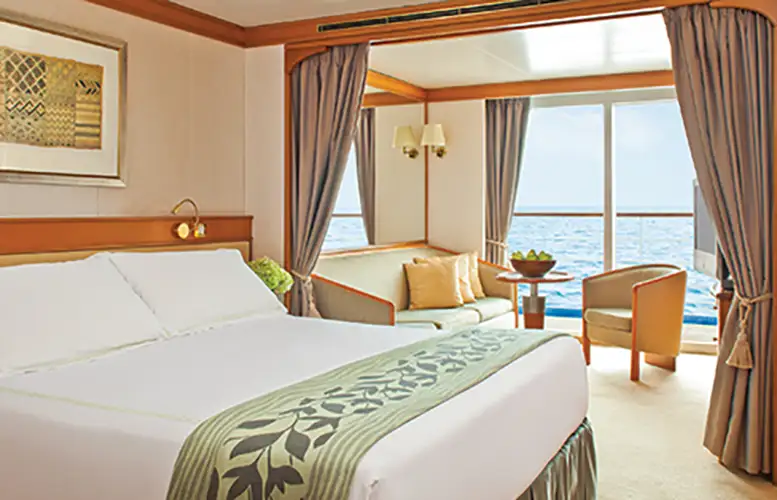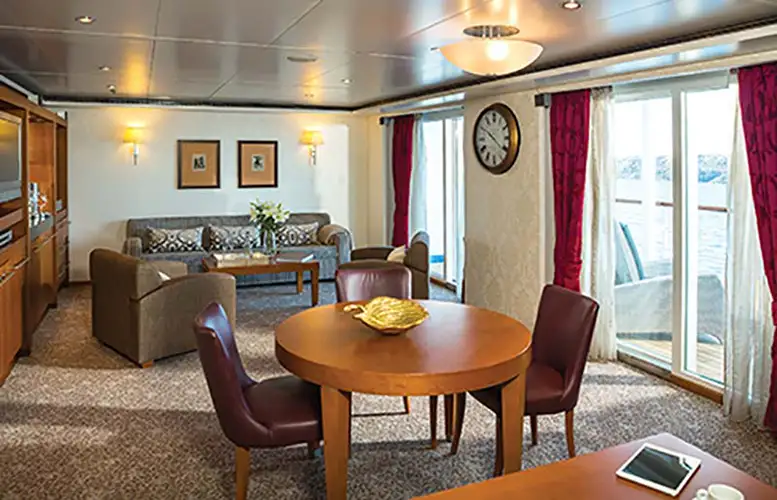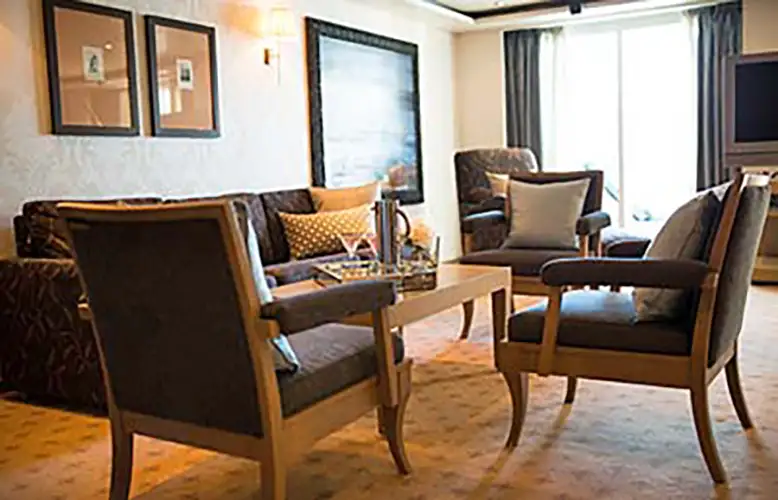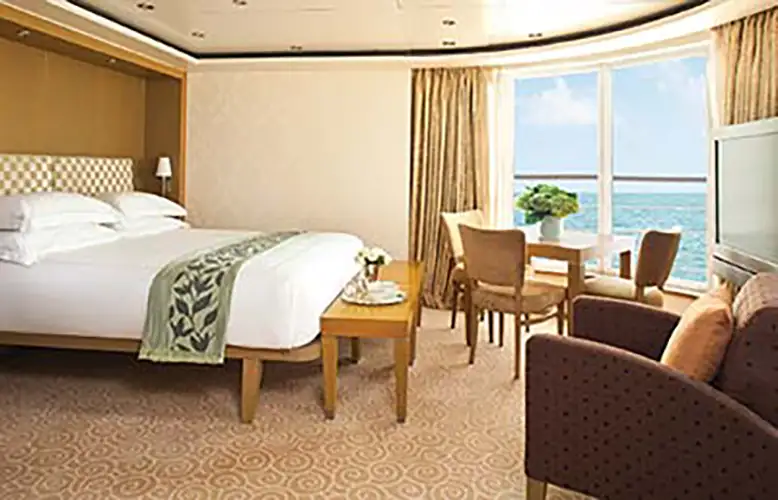Regent Greek islands: 14 nights from Istanbul with Seven Seas Voyager
Oct 17, 2025
Turkey, Greece, Montenegro, Croatia, Slovenia, Italy
Cruise itinerary
Departure Port: Istanbul ➞
Landing: Venice
-
Friday, October 17, 2025 - 7:00 PMIstanbul
-
Saturday, October 18, 2025 12:30 PM - 8:30 PMKavala
-
Sunday, October 19, 2025Navigation
-
Monday, October 20, 2025 9:00 AM - 6:00 PMMitilene
-
Tuesday, October 21, 2025 7:00 AM - 5:00 PMEphesus
-
Wednesday, October 22, 2025 7:00 AM - 5:00 PMMykonos
-
Thursday, October 23, 2025 7:00 AM - 5:00 PMSantorini
-
Friday, October 24, 2025 7:00 AM - 4:00 PMGytheio
-
Saturday, October 25, 2025 10:00 AM - 7:00 PMIgoumenitsa
-
Sunday, October 26, 2025 8:00 AM - 6:00 PMKotor
-
Monday, October 27, 2025 7:00 AM - 5:00 PMDubrovnik
-
Tuesday, October 28, 2025Navigation
-
Wednesday, October 29, 2025 7:00 AM - 5:00 PMKoper
-
Thursday, October 30, 2025 7:00 AM - not foundVenice
-
Friday, October 31, 2025 not found 7:00 PMVenice
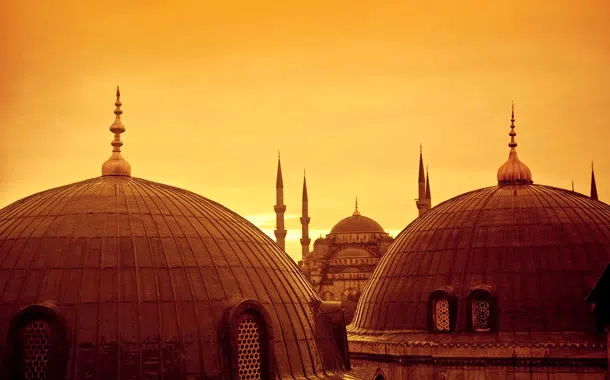
Istanbul
An incredible city, huge, vibrant like few others in the world. Where two continents meet, culture and diversity thrive in a unique architectural setting. Istanbul is hot,and we aren’t talking about the weather. These days there are more restaurants,bars,galleries and clubs around the city than Ottoman mosques(which is not a small feat).
The international fashion and design press has talked about Istanbul to the point of exhaustion; the sense of age that fell over the city once the Ottoman empire disappeared, has been replaced by a sense of energy and innovation not seen since the times of Suleiman the Magnificent.

Kavala

Mitilene
Mitilene is an ancient Greek city, with origins dating back to the 11th century BC. The city is the capital and port of the island of Lesbos, which is located in the north-east of the Aegean Sea. Lesbos has an area of about 1,632 km², with 320 km of coastline, making it the third largest Greek island. The city of Mytilene is located on the south-east coast of the island. It has a large number of neoclassical buildings, public and private homes. Among these, the Prefecture of Lesvos, the old town hall, schools and various houses and hotels that dot the city. The Baroque church of San Therapon, with its imposing style, overlooks the port. Its construction began in the 19th century and was completed in 1935. The port of Mytilene offers navigation services to the nearby islands of Lemnos, Chios and sometimes Dikili Ayvalik in Turkey. It also serves the continental cities of Piraeus, Athens and Thessaloniki. The island has a series of attractions, including cultural (ancient remains), geological, gastronomic and religious. Lesbos was also known, in ancient times, for the quality of its wines, its timber, for ships and for its famous light blue marble. Do not miss the superb Kastro, a fortress built by Emperor Justinian in 527. It houses the ruins of the Gatezulli palace and a Byzantine cistern. If you are a history enthusiast, the archaeological museum is full of mosaics and numerous Neolithic objects. The island's airport is named after the contemporary poet Odysseus Elytis. Lesbos (in Greek: Λέσβος, Lesbos) is a Greek island located in the north-eastern Aegean, in front of the coasts of the Anatolian peninsula. The main center is Mytilene. It is famous for having given birth, in the 7th century BC, to the lyric poets Alcaeus and Sappho. In Sappho's verses we find the exaltation of the beauty of femininity and eros between women, hence the term lesbianism. With an area of 1,630 km² Lesbos is the third largest Greek island by surface area and the eighth in the Mediterranean. Characterized by a conspicuous coastal development (320 km), it has a population of about 90,643 inhabitants at the 2001 census[1], a third of whom reside in the capital Mytilene. From an administrative point of view it is a municipality and peripheral unit consisting of the only homonymous municipality in the periphery of the Northern Aegean.
Ephesus
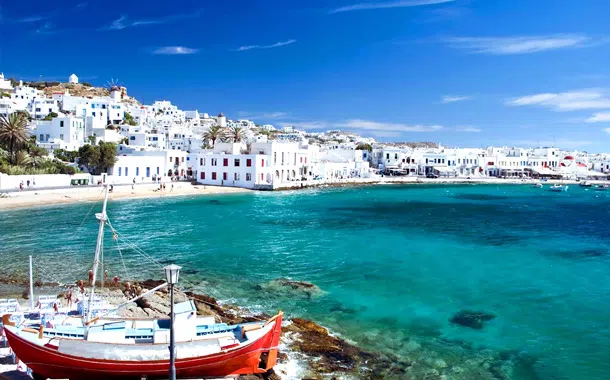
Mykonos
Mykonos is an extremely fun and fascinating place, where the frenetic mix of vacationers, fashionistas and celebrities is magically subdued to the cubist charm of the old town.
Mykonos is famous for being a cosmopolitan destination among the Greek islands and widely recognized as one of the meccas of great tourism. It is one of the most touristy islands in the Aegean Sea. Mykonos tends to be extremely crowded with visitors in July and August. The best time to visit Mykonos is mid-May through June (early in the season, accommodation is much cheaper and it's not that hot), or from September to mid-October.
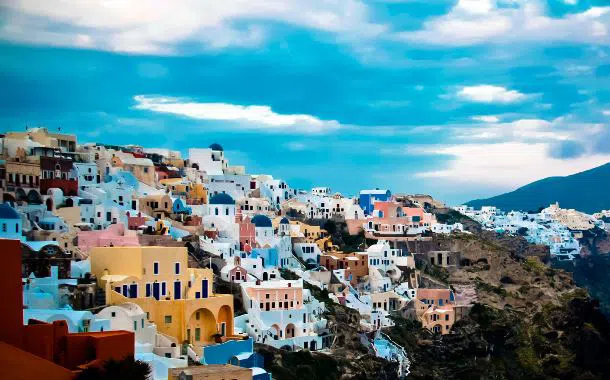
Santorini
Santorini is a small circular archipelago of volcanic islands located in the southern Aegean Sea, about 200 km southeast of mainland Greece.
Santorini is located in the southern part of the Cyclades.Its special geological configuration gives a spectacular, wild and unique beauty, becoming one of the main tourist destinations in Europe.
The current crescent shape of Santorini is a consequence of the enormous volcanic explosion that destroyed much of the island causing the formation of the caldera present on the territory, inside which form a series of wonderful small islands.
The island is a sanctuary of peace and calm, an idyllic corner where tourists from all over the world enjoy a few moments of pleasant relaxation. However, the quiet Santorini is, at the same time, one of the most suggestive and festive places in Greece. The square in the center of Fira and the beaches of Kamari, Perivolos and Perissa are the most lively and fashionable places.
The volcanic beaches of Santorini are not the best known in Greece, but they stand out for their diversity, their unique charm and the unique colors of the sand and stones. Santorini offers a spectacular view of the city, eclectic cuisine, enchanting art galleries, a very fun nightlife and excellent wines.
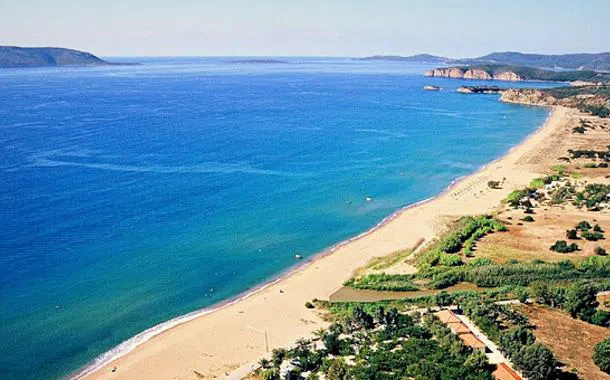
Gytheio
Located south of the Peloponnese, the city of Gytheio (or Gythion) is located north of the Gulf of Lakonia. The cosmopolitan atmosphere, the landscape of a unique island, and the variety of choices are the first impressions of visitors arriving in this paradise, formerly known as the land of the Gods. Gytheio was the port of the ancient city of Sparta and soon developed as the main export center of Laconia. On the hill, north of the village, the ruins of the citadel reside. At the foot of the hill is the ancient theater which still hosts numerous cultural events. Ornamented by various Roman constructions, associated with the mountains and the sea, it gives a prestigious natural landscape. All this wonder is combined with neoclassical buildings, with the addition of the small and charming fishing port. The beaches here are fantastic (many awarded with blue flags), especially those of Mavrovouni and Selinitsa, where you can swim and try different water sports such as windsurfing. Many cultural events take place during the summer, with music festivals, theatrical performances, and attractions for young people. The summer ends with the start of the traditional fair on September 14th which lasts for a week and, subsequently, on September 30th near the port. 10 km from Gytheio, on the road to Areopolis, there are the ruins of Passava castle, built in the early years of the conquest of the Peloponnese by the Franks, constituting the base of their barony. Don't forget to visit Trinissa, a wonderful complex of islands that provide a secluded, relaxing, and natural place.
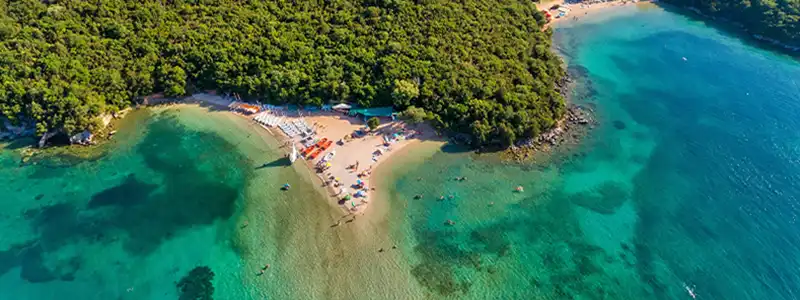
Igoumenitsa
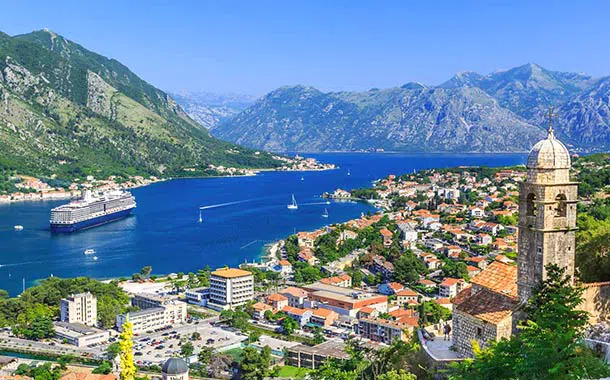
Kotor
The Adriatic Sea penetrates the jagged coast of Montenegro and winds between high mountains until it meets the exquisite and walled medieval city of Kotor.
Along the Adriatic coast of the former Yugoslavia, we find one of the most unique and fascinating European coastal areas, the city hidden in Montenegro, Kotor.
Located at the bottom of a bay, the beautiful medieval city of Kotor is considered a Mediterranean location surrounded by cliffs and an interesting historic wall. The tourist attractions of Kotor are easily reached with a pleasant walk. This small walled city, declared a UNESCO World Heritage Site, has compact dimensions that make it comfortable and easy to visit.
The central part of Kotor was built between the XII and XIV centuries. A historic center surrounded by a rather thick wall, four and a half kilometers long and fifteen meters high. This immense fortified wall reaches the bastion of Sveti Ivan (San Giovanni).
Inside the walls, it preserves an urban network cut into the stone. Its most emblematic work is the Cathedral of San Trifone, built in the 12th century. Inside the church it contains objects and frescoes sculpted during the 14th century. Furthermore, The Orthodox Church of San Nicolas, built between 1902 and 1909 in neo-Byzantine style and that of San Luca (13th century) built in Romanesque and Byzantine style.
Together with the churches, the city includes many palaces that tell its history: the Maritime Museum, located in the Grgurina Palace, a splendid baroque building located in the historic center of the country. The Drago house, with its beautiful Gothic windows, the Prima building, where Renaissance and Baroque lines are combined, the Ducal Palace and the Bizanti, both from the 17th century and the Napoleonic theater in the 19th century.
In Kotor, it is very common to see locals located along the rocky coast in the lower part of the city. In the old part of the area you will find many shops and restaurants that will delight your eyes. This location is the classic ideal city to spend quiet days or for a romantic getaway.
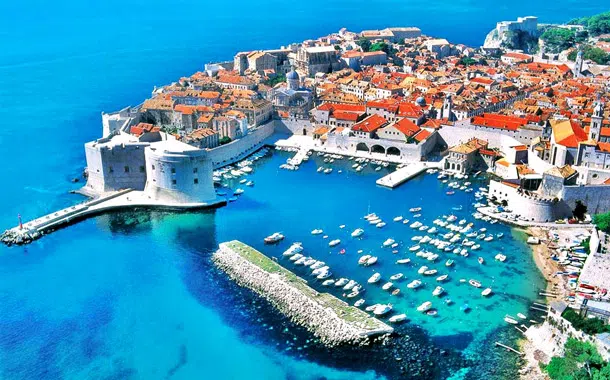
Dubrovnik
Dubrovnik is definitely special. A magnificent curtain wall surrounds marble streets and Baroque buildings exude a pearly light in the Adriatic sun.
Picturesque and artistic, Dubrovnik is a tourist hotspot and port in southern Dalmatia, at the foot of the Srđ mountain. From a historical and cultural point of view, it has been included in the list of UNESCO World Heritage Sites.
Thanks to its beauty and everything it has on offer for tourists, Dubrovnik is one of the most attractive destinations in the Mediterranean, so much so that the city can be visited all year round. In addition to its world-famous architectural heritage, this place has beautiful rocky beaches, pebble beaches and sandy beaches, enjoys a Mediterranean climate and also has lush vegetation. The main pedestrian street, Placa, is a melange of cafes and shops with monuments at each end.
Churches, monasteries and museums adorned with finely carved stone, recall an eventful history and a rich artistic tradition. Beyond the city there is a paradise of beaches, wooded peninsulas and a crystal-clear sea dotted with lush islands.
The city is also known for its delicious cuisine and its infrastructure of hotels for tourists. The city offers a wide selection of first-class restaurants, numerous sport and leisure activities, as well as cultural and entertainment events
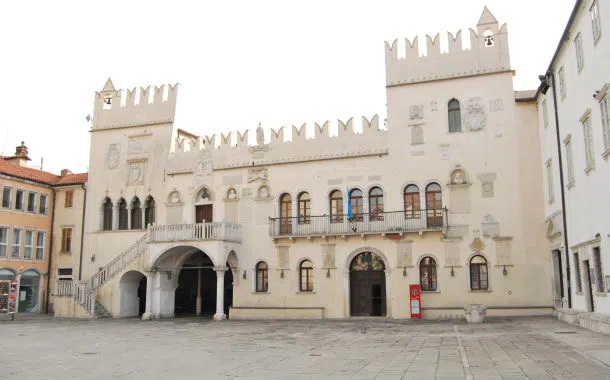
Koper
Koper (in Slovenian Koper, in Croatian Kopar, in German Gafers) is a city in Slovenia with 24,864 inhabitants, the capital of the Municipality of Koper (53,322 inhabitants) and the country's main port; it overlooks the Adriatic Sea. Among the main places of interest in Koper are the Praetorian Palace from the 15th century, in Venetian Gothic style, the Carmine Rotunda church from the 12th century, and the cathedral of San Nazario with its bell tower (55 m) from the 14th century. Koper is a bishopric with the Diocese of Koper, a suffragan of the Archdiocese of Ljubljana.
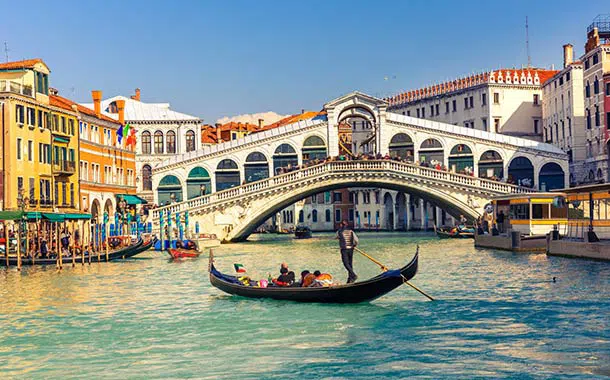
Venice
Setting sail from Venice on a cruise ship is unique and unforgettable. Discover all the cruises that depart from Venice for a great start to your holiday!
Venice it is one of the golden destinations of our age. A unique city of 120 islands, with an ancient history and endless waterways, it attracts a constant flow of tourists from all over the world to see its inspiring architecture and navigate its canals.
There are many souvenirs you can bring home from Venice, but the most lasting memory will be your impression of the city itself.

Venice
Setting sail from Venice on a cruise ship is unique and unforgettable. Discover all the cruises that depart from Venice for a great start to your holiday!
Venice it is one of the golden destinations of our age. A unique city of 120 islands, with an ancient history and endless waterways, it attracts a constant flow of tourists from all over the world to see its inspiring architecture and navigate its canals.
There are many souvenirs you can bring home from Venice, but the most lasting memory will be your impression of the city itself.
